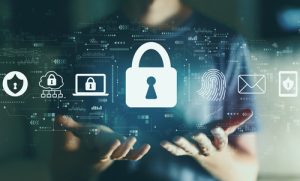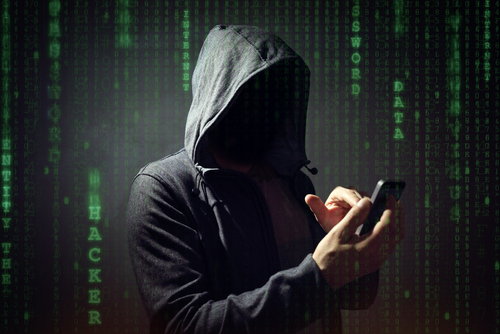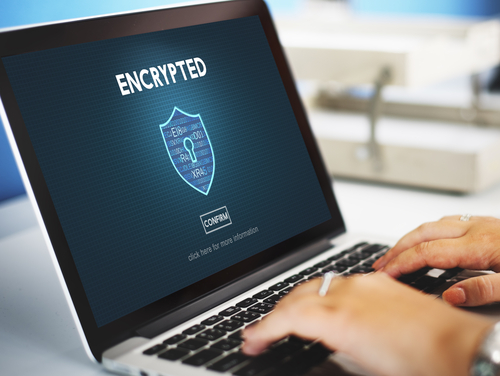As a business leader, it’s your job to identify the weakest link in your cybersecurity. Finding this vulnerability gives you the power to overcome it and make your organization more secure.
However, you may be surprised to learn that your employees pose the biggest threat to your cybersecurity. Many lower-tier employees have the least cyber protection and training in the company, which makes them the perfect target for hackers.
To strengthen your company’s cybersecurity, you must understand how employees weaken cybersecurity and how you can help them be more secure online.

What Is the Weakest Link in Cybersecurity?
The weakest link in cybersecurity refers to the most vulnerable part of your online presence. This vulnerability puts your company at risk of a data breach. Data breaches cost companies globally an average of 4.5 million US dollars a year as of 2023. This is an increase of 15% in the last 3 years.
Many business leaders see the importance of finding vulnerabilities and investing in extra security measures to protect their data from cyberattacks. Unfortunately, the biggest weakness is often simple human error.
How Employees Weaken Cybersecurity
Since the pandemic, people have been working in more remote or hybrid settings. This has created a new complication for IT leaders who are trying to keep company devices secure. People take work devices home and operate on insecure networks.
They use devices not protected by the anti-virus software the company installs. Plus, you cannot discount the simple human factor. People make mistakes. They click on spam emails; they make poor judgment calls when surfing the internet.
These mistakes, however, can lead to big consequences for a company. So, what are the main ways that employees weaken your cybersecurity?
#1 Using Insecure Networks
Mobile devices have made it easier than ever for people to work from any location. Simply log into your account, and you can access emails or conduct business from the palm of your hand. Although this is a marvel of modern technology, it can also be a vulnerability.
You should always be aware of what Wi-fi you are using. Public Wi-fi is incredibly convenient, but it can be insecure. Most public Wi-fi is not secure and poses a security threat. Cybercriminals can create fake public Wi-Fi that you attach to.
Then, as you share sensitive data, the hacker gains access to that information. They can also easily spy on your online activity without you ever knowing what happened. But public Wi-Fi isn’t the only insecure network you need to worry about.
Employees using personal Wi-Fi may also be at risk of security threats. Since your company’s IT does not regulate this Wi-Fi, they may not have the proper antivirus or encrypted technologies needed to keep the user safe.
Then, as they share information online, they may be at risk of a cyberattack.
#2 Falling for Phishing Scams
By the end of 2022, there was a 61% increase in phishing attacks from the previous year. Scammers are becoming cleverer. They use the human factor of many companies to exploit them for their personal information.
Phishing attacks come in many forms and can be convincing to an untrained eye. Many phishing attacks happen through email. These scams usually follow the latest trends, but phishing emails can look like urgent requests to update an account, a company notifying you of suspicious activity, or even free coupon offers.
These emails typically have a generic greeting, there can often be grammatical mistakes within the body, and the message is short and urgent. Then, the email will direct the victim to click on the malicious link and input their username and password. This compromises their account.
Since hackers adapt every year, some of these scams can be incredibly convincing. People often don’t recognize that it’s a scam until it’s too late. Many companies go to great lengths to protect top-tier employees from spear phishing when a hacker targets a specific well-known figure in a company, but they often neglect to take measures to keep their other employees safe from these threats.
Additionally, some phishing emails may lead to ransomware attacks. Ransomware attacks happen when someone downloads malware onto a device. It encrypts the person’s files, keeping them from accessing their data.
People often accidentally install these onto devices by downloading attachments from emails with unknown senders.
#3 Working on Personal Devices
Another way that human error can compromise your company’s cybersecurity is when an employee uses personal devices for work. Devices hosted by a company often have anti-virus protection, pop-up blockers, anti-malware software, and other security controls that allow your IT department to monitor and handle cyber threats.
Your employees’ personal devices may not be secure. They may not have all the protections a company’s device may provide. Also, if they are using their devices on public Wi-Fi or their own insecure networks, it can be easy for hackers to gain access to information.
Also, it is unclear who else has access to these personal devices. Employees may share their devices with several other people, who may gain access to the accounts and secure information your employee uses for work.
Although personal devices are convenient, they are not always the best option for preventing security breaches.
#4 Utilizing Weak Passwords
Another way the human factor can be problematic is that employees often don’t have strong enough passwords. A strong password should be at least 12 characters long with a combination of symbols, numbers, and lower and uppercase letters.
These passwords should not be easy to guess, so no birthdays or kids’ names. People should also change their passwords regularly to keep their accounts the most secure. However, most people break all these rules, opting for passwords that are easy to remember.
They also often use the same password for several accounts. Weak passwords are an easy target for hackers. Easy-to-guess passwords are vulnerable to brute force attacks where a cybercriminal simply guesses at your password until they gain access.
If an employee uses the same password for multiple accounts, once one account is compromised, the others are at risk, too.
#5 Not Keeping Software Up to Date
Another way that employees can weaken their cybersecurity is by forgetting to update their software.
People sometimes see the update notification and decide to postpone it to avoid having time away from their work, but this is problematic. Updates help keep computers and software healthy. Many updates fix bugs and other vulnerabilities and can make cybercrime easier. Hackers can use these weaknesses to access your data.

How to Teach Employees to Be Safer Online
If you are looking for ways to make the human element of your company more resistant to social engineering attacks, there are several ways you can encourage the employees in your company to use better judgment while working with digital assets and data.
As a business leader, cultivating a security culture, implementing cybersecurity training programs, encouraging multi-factor authentication, and providing VPNs and email encryption can improve your company’s cybersecurity.
#1 Cultivate a Security Culture
If security is something you value, it should become a part of your company’s culture. From the moment you hire an employee to their everyday working habits, all parts of their day should be influenced by the security culture your company has built.
If employees understand that cybersecurity is important, they will be more diligent when they share and handle data. To build this culture, be sure to provide information about your company’s cybersecurity strategy.
Remind your employees of these guidelines often to keep them fresh in their minds. Having your IT team put up posters outlining your security strategy may be a great idea. Visual reminders can be a great strategy for encouraging secure behaviors.
#2 Implement Cybersecurity Training Programs
Cybersecurity awareness is one of the best ways to combat cybersecurity threats. If your employees get cybersecurity training, they become better able to recognize and mitigate threats on their end. However, these training programs cannot be one-and-done.
These programs need to apply to your employees’ real lives, offer hands-on applications, and utilize information your employees already learned. It’s not enough to have employees watch videos and take quizzes, there should be actual practice using the security strategies with simulations.
Your IT team should refresh cybersecurity training frequently to keep these concepts foremost in your employees’ minds. In addition to training, it is important to provide tools to make these practices easier for your employees such as password manager programs to help make stronger passwords and to keep track of when passwords should be changed.
#3 Encourage Multi-factor Authentication.
Most programs utilize multi-factor authentication (MFA) as part of the sign-in process. You can enable this feature on accounts to make them more secure. MFA creates an extra layer of protection against cyber threats.
When you use MFA, after you input your sign-in information, a secondary device will receive a temporary code that you will use to complete the sign-in process. This extra layer of protection may be slightly less convenient than simply signing in, but it is a terrific way to keep your accounts safe.
If an employee gets a notification on their secondary device of sign-in attempts that they did not initiate, they know their account information is compromised and can change their password. Even though most programs and applications have MFA as an option, employees don’t always enable these features in the name of convenience.
If part of your security strategy is to utilize multi-factor authentication, then it will encourage more employees to enable and use this feature. With some programs, you may be able to enable this configuration for all your employees from the admin level instead of relying on each employee to use this feature.
#4 Use A VPN and Email Encryption
Other ways to protect your data are to have your employees use a secure Virtual Private Network, or VPN, especially if you have hybrid or remote workers. A VPN will protect your employees no matter where they go or what devices they use.
All they need to do is access the VPN server and then conduct their business. VPNs use an encryption tunnel to mask IP addresses and keep online traffic more secure. VPNs are not a complete fix, but they can provide another layer of protection for employees while sharing and viewing company data.
Many companies provide VPNs for businesses with affordable and secure packages. Try to find one that offers additional tools, such as encrypted email, to get the most out of your subscription. Encrypted email can help to protect your employees against third-party spying and protect client data.
Sekur Can Help Keep Your Employees Safe
At this point, you are thinking about adding some measures to keep your employees safer while they use the internet. Sekur is an affordable way to regain your privacy. With our Swiss-hosted email, VPN, and instant messenger, your communications are protected with military-grade encryption.
You can send emails to Sekur and non-Sekur users with our Swiss, high-speed servers. These servers have unlimited data, and you can feel comfortable that your data is protected by strict Swiss privacy laws. We are an independent company, free from big-tech platforms, so we don’t data mine.
Our VPN also keeps your IP address anonymous online. You can use Sekur on an unlimited number of devices so that you can communicate with co-workers and clients anywhere. With Sekur, privacy has arrived.
Conclusion
A business leader or IT representative needs to understand the vulnerabilities in your company’s cybersecurity. The employees, especially ones with minimum online safety training and cyber protections, can be the weakest link in your network.
Spam mail, brute force attacks, compromised passwords, and unsafe internet practices are the main ways hackers can breach your data through your employees. To beef up your cybersecurity, it is important to train your employees in internet safety.
You may need to invest in a VPN for safe searching, anti-virus protection, and encrypted emails to decrease your employee’s vulnerabilities. These measures can help protect your company’s data online.

